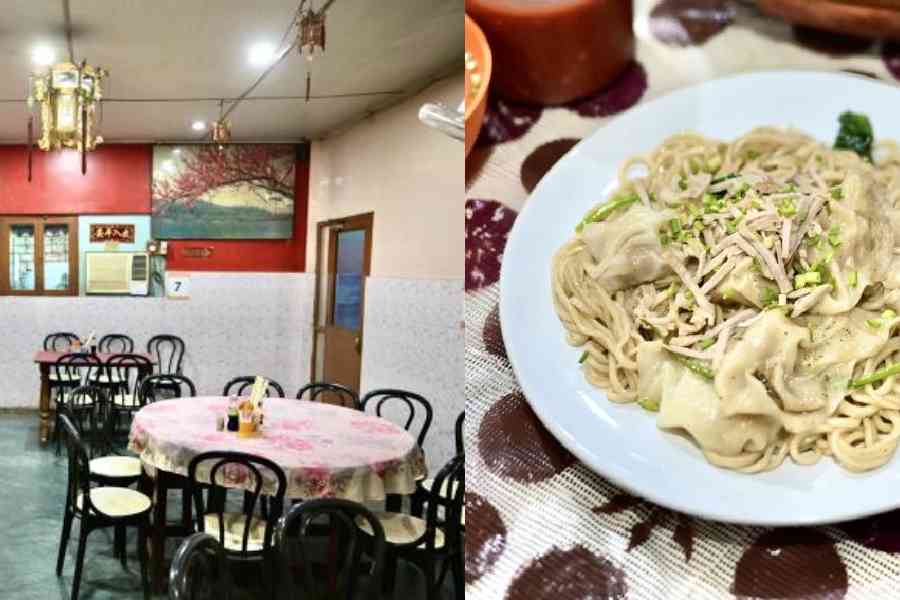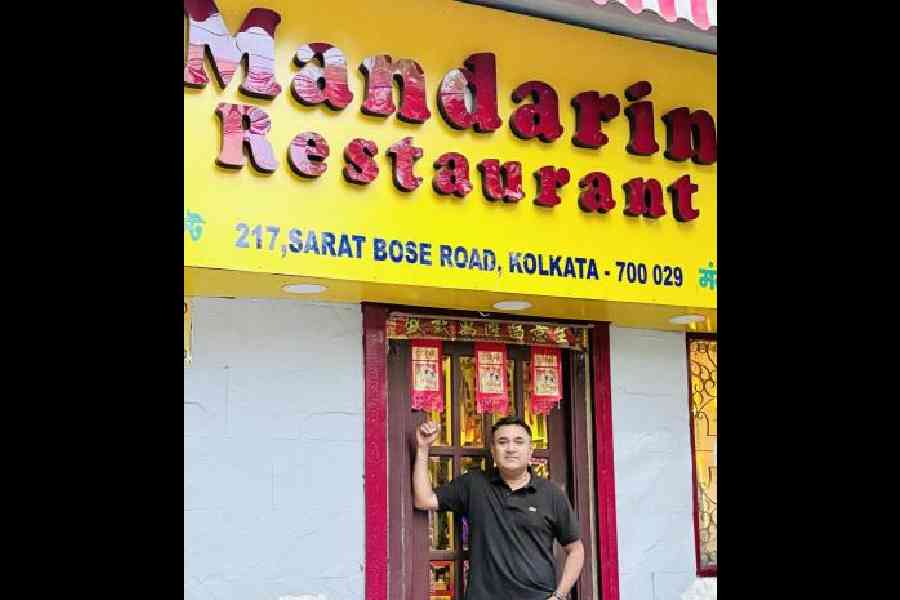Nostalgia hits hard as I dig my fork into the Singapore noodles at one of the finest-diners of Calcutta. This reminds me of my earliest memories of the first-ever noodles from my mother’s kitchen! In fact, noodles were then more popularly known as chowmein. And like almost every other household, noodles meant those thin strands, perfectly boiled and tossed in kadhai with some chopped garlic and grated ginger, along with veggies, cauliflower and eggs on top. Many evenings were spent snatching away my elder brother’s portion and heaven were those times when maa decided to add in the shrimps and soya sauce!
Simplistic, but, even today, no fine-dining servings have ever been able to overpower the majestic essence of a typical ‘Bengali Tiffin-Chowmein’ that maa used to make. It was much later that I realised that maa had absolutely conned me into believing that that’s exactly how noodles would taste! Growing up near one of the oldest traditional Chinese restaurants of the city named Kim Wah, at Garcha Road (Ballygunge) run by a Chinese family, opened up to me the world of noodles. And being born into the abode of Chinese cuisine, became a boon to my inquisitive mind.
It was during the post-colonial era, with famine, war and scarcity hitting China, that made an avenue for a culinary explosion in India! And it all started with my city, the City of Joy indeed. Chinese immigrants settled down at one barren part of the then growing capital — Calcutta. But, eventually, with tanneries being shut off, these Chinese immigrants had to convert their traditional occupation to commercialising the next big thing they could afford to do in a new land, i.e., food! And there came the Hakka community, with their iconic discovery of Wok Tossed Hakka Noodles, synonymous to the Mandarin Chao Mian or chowmein, of the Taishanese diaspora.
Today, years later, with the community slowly dissolving, the aromas of the boiling pot of culinary history tracing back to over a century lingering through the dingy streets of China Town or Tangra or Tiretti Bazar that still makes China Town the birthplace of Indo-Chinese later proliferated across Calcutta, followed by the nation itself!
As an avid traveller even after exploring the world, today, on Noodle Day, I choose to walk down the alleys of my city, recalling the ground-breaking, iconic Chinese restaurants which are my all-time favourites that rule the heart of the city and, equally, mine too.
Eau Chew

Eau Chew's Josephine Noodles, Eau Chew
The first ever Chinese restaurant of Kolkata, the name Eau Chew is enough for a foodie like me to keep coming back to this town. No billboards, no big branding or signage, just a small yellow placard hanging from an ancient wall with the iconic name inscribed in red, one might miss this last standing glory if not looking with a keen eye! Just three people running the restaurant might seem next to impossible, but that’s the last thing one would frown about if the heart is already won by their signature items, and my all-time favourites — Josephine Noodles, Eau Chew Special Noodles, Mixed Gravy Noodles and their Cantonese Noodles.
Nu Wan Li
This hidden gem is almost a forgotten tale for the new, but an undying legend of South Kolkata. Situated in Hazra Road, your first step into Nu Wan Li might blind your eyesight with all things red — gradually making it a soothing view altogether. An example of long-standing glory of cultural and culinary fusion, Nu Wan Li is an early find from my childhood days at Garcha with its Chimney Soup, Steamed Wontons, and Nu Wan’s Special Noodles preparation with minced chicken, named Chicken Lo Mein winning hearts a billion times all over again! But my favourite till now is their Shanghai Rice, a unique dish with both noodles and rice, veggies, and a choice of non-veg.
Ah Leung House
Tucked away in a bylane of a bustling street of Tangra, right behind the famous Kali temple of the Chinese, is this 25-year-old run by 50-plus-year-old Li Kiuo Jung. Almost 25 years back, amidst the sprouting Chinese restaurants in every nook and cranny, Ah Leung made its way through by inventing a dish that no other restaurant had thought of — Singara Chow! A bowl of steamed noodles with minced pork wontons (resembling the shape of a Bengali Shingara), served with piping hot soup became the legendary dish that Ah Leung got famous for. Li says that despite owning and conceptualising, the credit for its massive success goes to his great grandparents, whose recipe worked wonders! Today, eating at Ah Leung gives us that experience of home-made secret recipes that were once being prepared by a couple back in China!

Ah Leung, Ah Leung's Shingara Chow
Chung Wah
Today’s Chung Wah is a legendary name expanding across different parts of India. But once, it used to be H.S. Lee’s abode of culinary expeditions in a small dingy kitchen. Founded in 1973 at Bentick Street, Chung Wah became an overnight famous food joint due to it’s inimitable recipes. Yet, they were making no unique dishes. But what was the secret ingredient? Alfred and Steven Lee, who now run the restaurant, claim that the only secret recipe behind their consistent popularity was the fresh buy! A practice that they follow even today is waking in the morning and buying daily groceries to prepare fresh items. Likewise, just like their recipes, my Chung Wah favourite has remained constant too with Chung Wah Special Noodles (made with pork, chicken liver, prawn, egg and veggies), Chicken Prawn Noodles, and Fricasseed Chicken Chowmein alongside Sweet And Sour Pork and Chilli Fish.
Sei Vui
Built on the debris of a 1896 dorm quarter inhabited by the Sei Vui village people who once migrated to Tiretti Bazar, the name of the restaurant is a homage to their ancestors as well. Currently renovated in a beautiful hues of brick red and green, similar to heritage houses of Bengal during the Zamindari periods, the decor is a deliberate attempt of displaying the cultural fusion of China and Bengal. Intricately hand-painted and meticulously designed, Sei Vui’s interior emits the traditional Chinese ethos and complements their unique dishes which can sweep you off your feet rightaway. Almost six years later, the place seems new yet nothing is unknown to my memory. And trying my hand at their special Cha Jang Mein, an unique Chinese noodle dish made with boiled noodles and minced pork tossed in black bean sauce, Yam Mein, Hokien Chowmein and Peking Chowmein, the memory now seems hard to erase.
Mandarin
Mandarin is not just a food hub but a hub of inspiration too! Once a refugee surviving on some Rs 50, Mandarin became the 3rd invention by the business-genius Monica Liu, also the founder of Kim Li and Tung Fong — two other favourites of mine. It is ensconsced in cozy Chinese decor and has dishes to die for, specially some signature noodle dishes like Mandarin Special Rice Noodles made with rice noodles, mushrooms, egg, chicken, prawn with a fried egg on top.

Mandarin Restaurant
D’Ley
Never judge a book by its cover and the same is for Tiretti’s underrated Chinese eating house D’ley. Less of a restaurant, with just 4-6 covers, it dates back to more than 70 years and was conceptualised as an eating house run by a family by Kuchi Koi. Even today, despite the budding Chinese restaurants across Bengal, this small hidden gem is quite a deceptive sight that only reveals its culinary gems when you spare a few minutes alone, just to sit and enjoy a few bites of their Chilli Pork alongside my favourite, Chicken Garlic Chilly Chow.
Kafulok
This 33-year-old Chinese restaurant is a testament to some of the lip-smacking Chinese that still remains unaltered yet manages to get better with times under the craftsmanship of 45-year-old Walter. He recalls his earliest memories of walking inside the restaurant with his father at 16 years of age only to learn that Kafulok was not just about food, but about the love it evokes in the heart of the customers. Thanks to Walter, who still serves the best Hakka and wonton noodles in town.
Noodles have reigned the heart of every Chinese food lover. What started in Calcutta is what India experiences on it’s plate. As I walk down the street tracing back from maa’s noodles to the noodles I grew up with, the city still basks in its culinary glory. And here, I put down my last plate of the quintessential Wok Tossed Noodle, commiting to a strict diet for the next three months with the hope of breaking this resolution with something new!
Debaditya Chaudhury is director, Chowman, Oudh 1590 and Chapter 2 as well as musician and Keyboardist of rock band Lakkhichhara.











